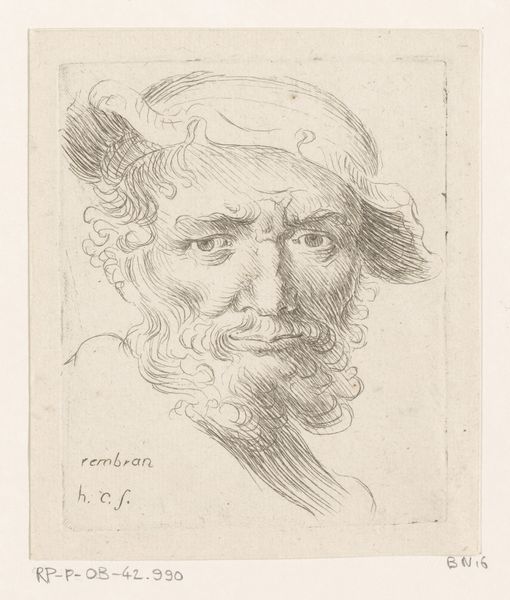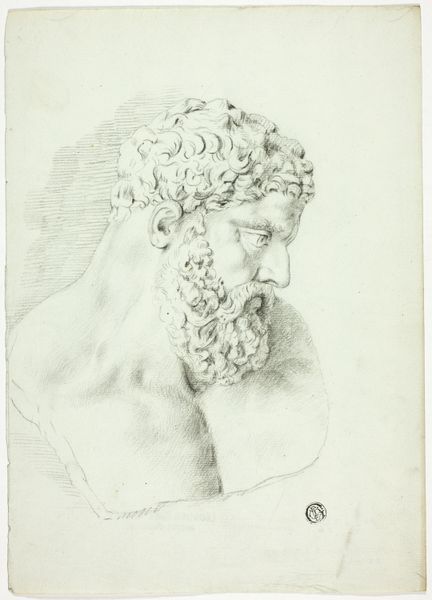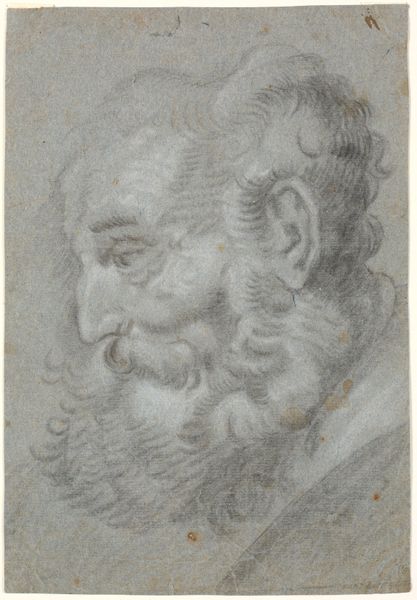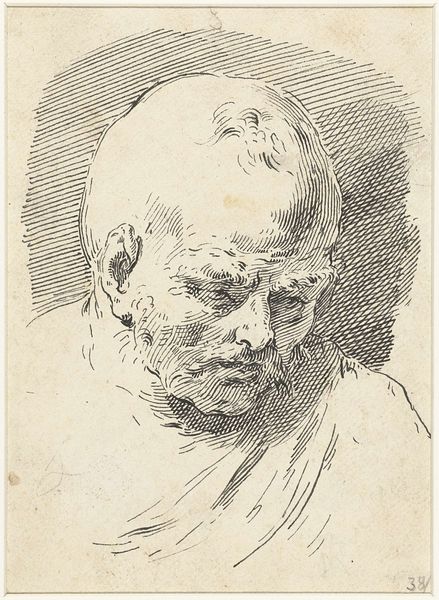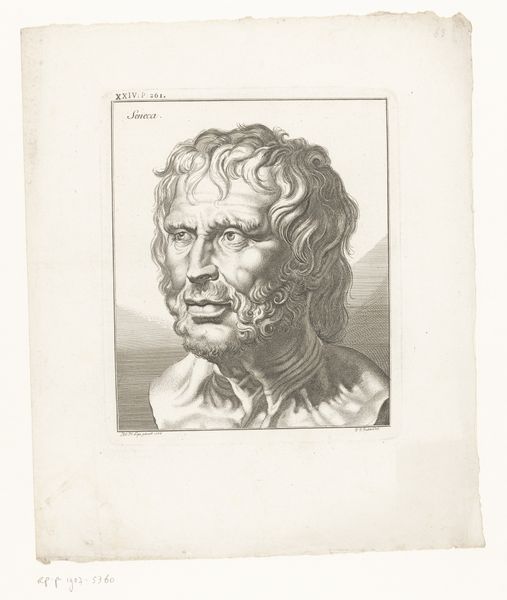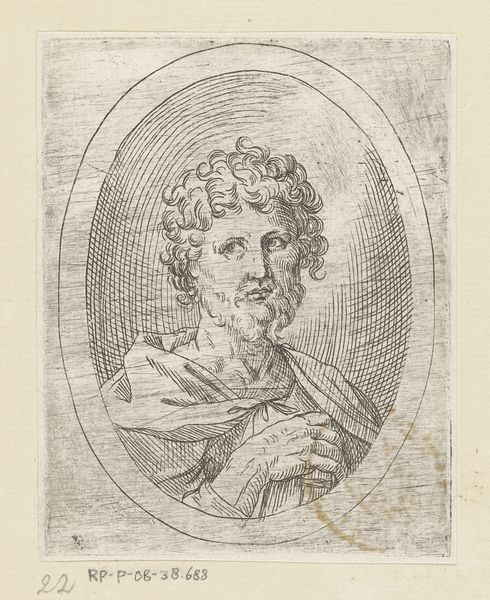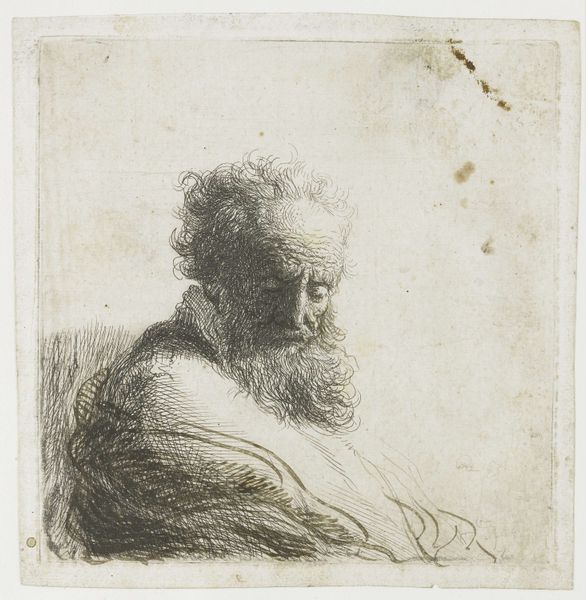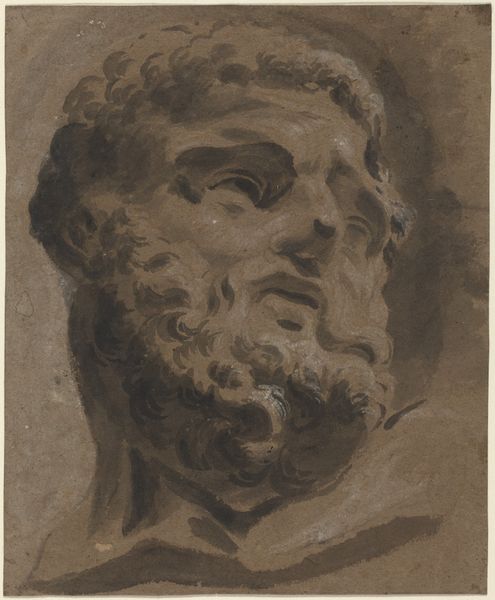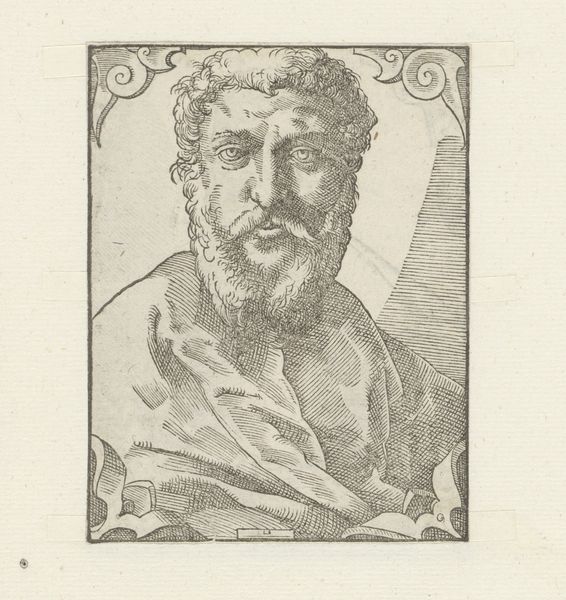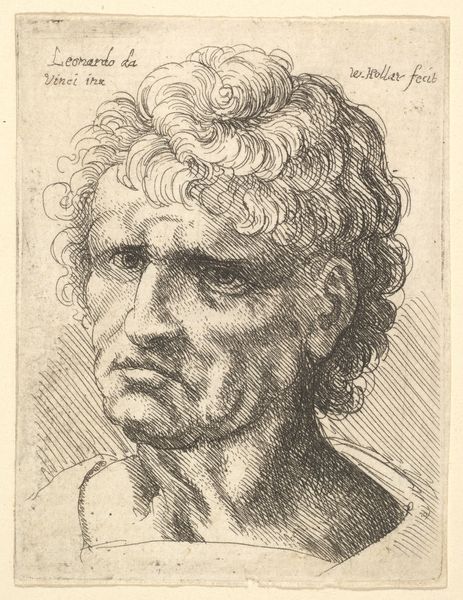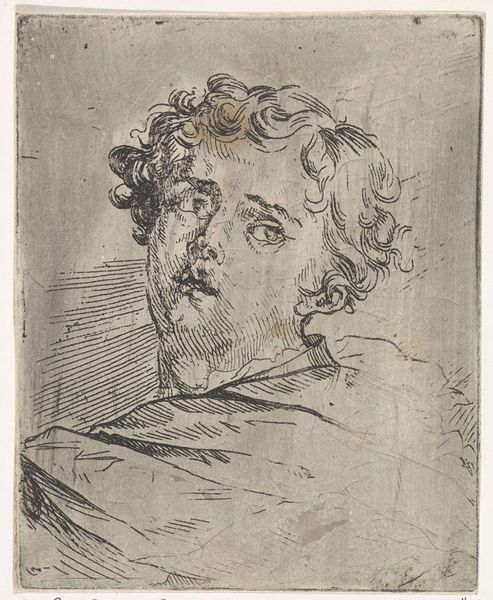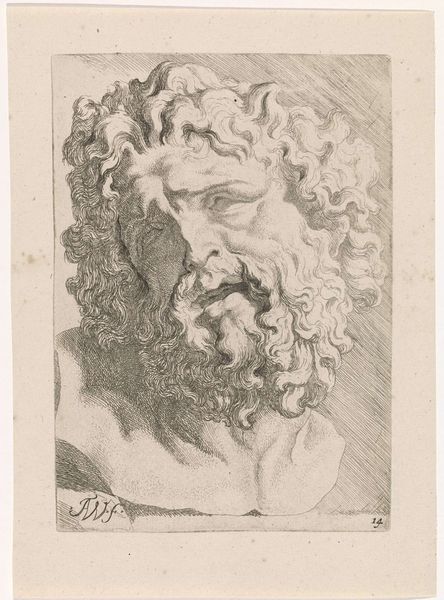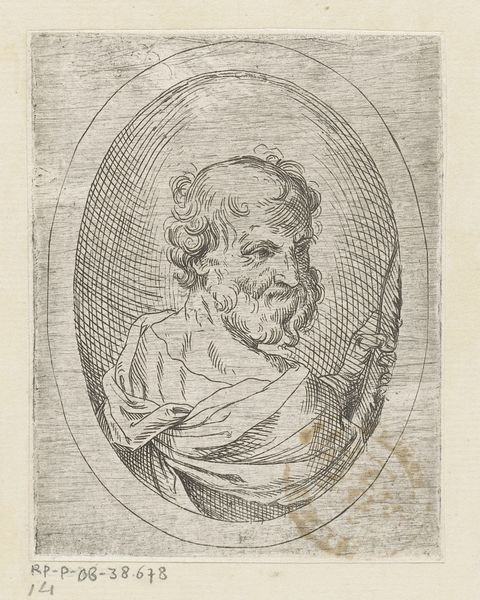
Dimensions: height 100 mm, width 70 mm
Copyright: Rijks Museum: Open Domain
Curator: Looking at "Borstbeeld van een man met krullend haar en baard," which translates to "Bust of a Man with Curly Hair and Beard," an engraving by Jacobus Buys, created sometime between 1740 and 1801, now residing at the Rijksmuseum. Editor: My first impression? Brooding, definitely brooding. And maybe a touch melancholic. The tightly wound curls feel like a metaphor for tightly wound emotions. Curator: That’s an interesting interpretation. We should consider how engravings, especially during this period, often served a reproductive function. This image could be after another artist’s painting or sculpture. So, we should reflect on how Buys re-presents and interprets that original artistic intent. What does he choose to emphasize? Editor: Hmmm, good point. The light and shadow. See how the heavy shading emphasizes the curve of his brow and the downturn of his mouth? There's an undeniable weight there. You can almost feel the burden of existence! Plus, the line work itself...it's so meticulous, creating texture almost tactile, y’know? Curator: Absolutely. The meticulous line work reflects a broader societal context—the rise of scientific inquiry, of precise documentation. How did Enlightenment ideals impact the production and circulation of images, and access to this form of reproduced art to wider audiences, including different gender and social-economical groups? Editor: Ah, so this little engraving might have been a tiny act of democratization of knowledge or at least image culture, cool. Maybe he wasn't so bummed out after all, but secretly feeling like a radical spreading forbidden feelings! Curator: Perhaps a bit of a reach, but a welcome, lively thought. Let's remember that representations of masculinity during the 18th century were steeped in notions of virtue and reason. But the emotive quality here, as you pointed out, complicates that narrative. Where and how does it break away? Editor: Precisely. Maybe he wasn’t feeling virtuous at all. Maybe it's a commentary on the very performance of virtue and reason—a subtle rebellion etched in tiny lines. Curator: Thank you, that helps. It has given me a different way of framing its role within a specific time. Editor: Any time! It makes me want to go home and write some really, really sad poetry, preferably by candlelight, you know? Embrace the drama!
Comments
No comments
Be the first to comment and join the conversation on the ultimate creative platform.
